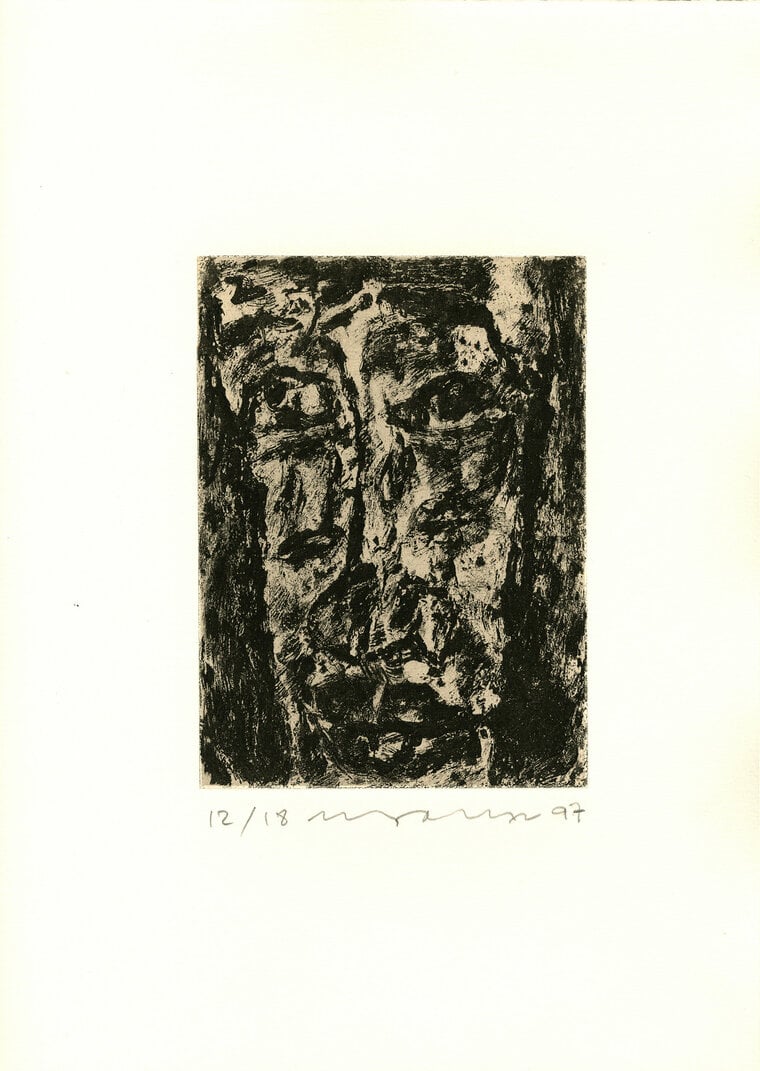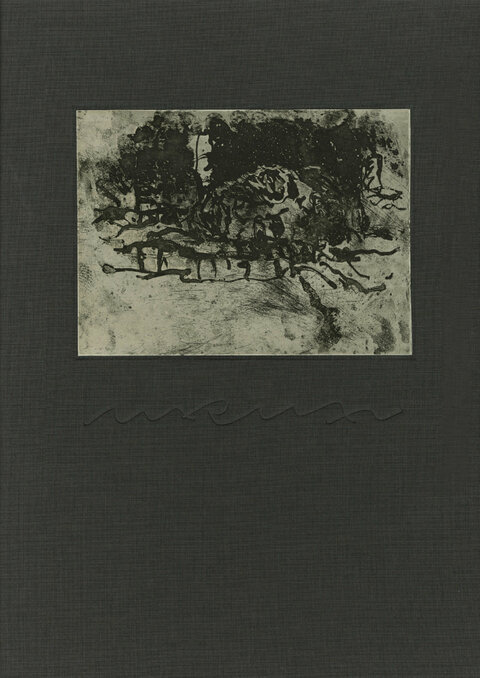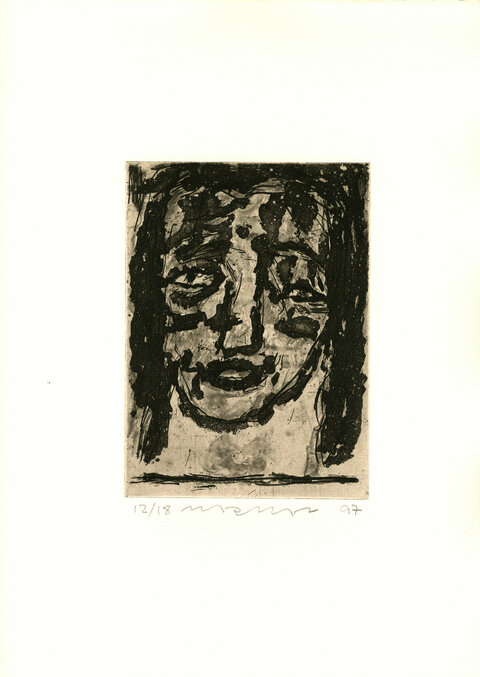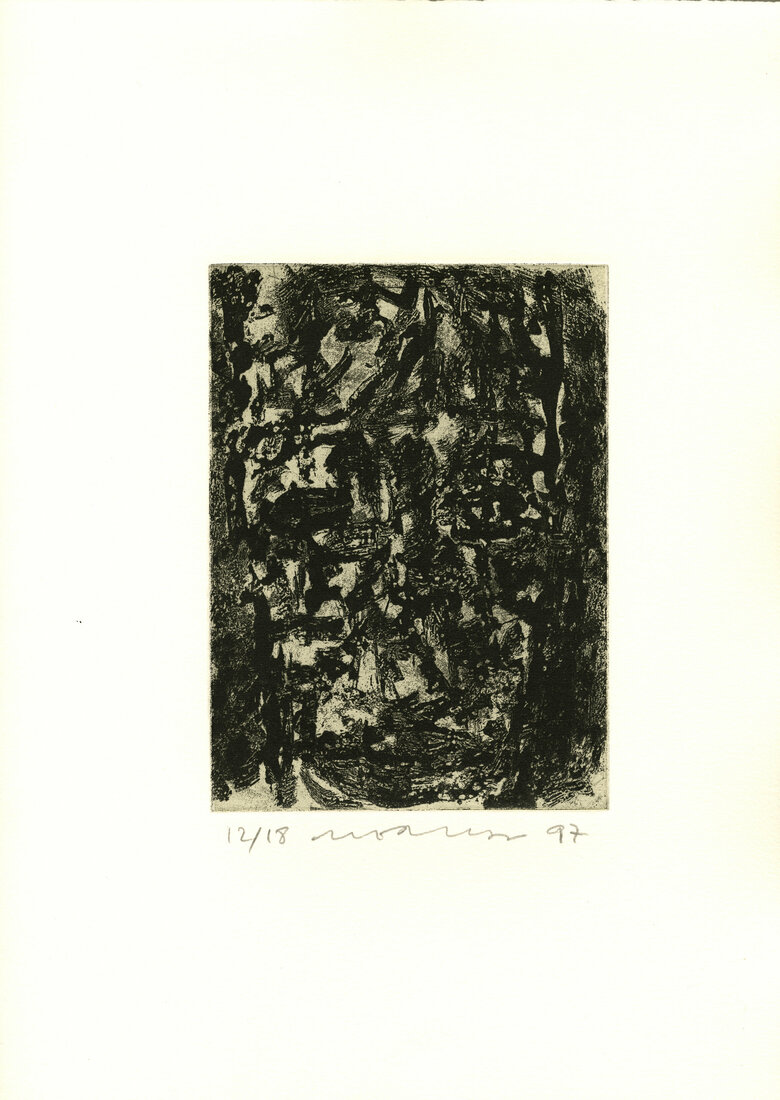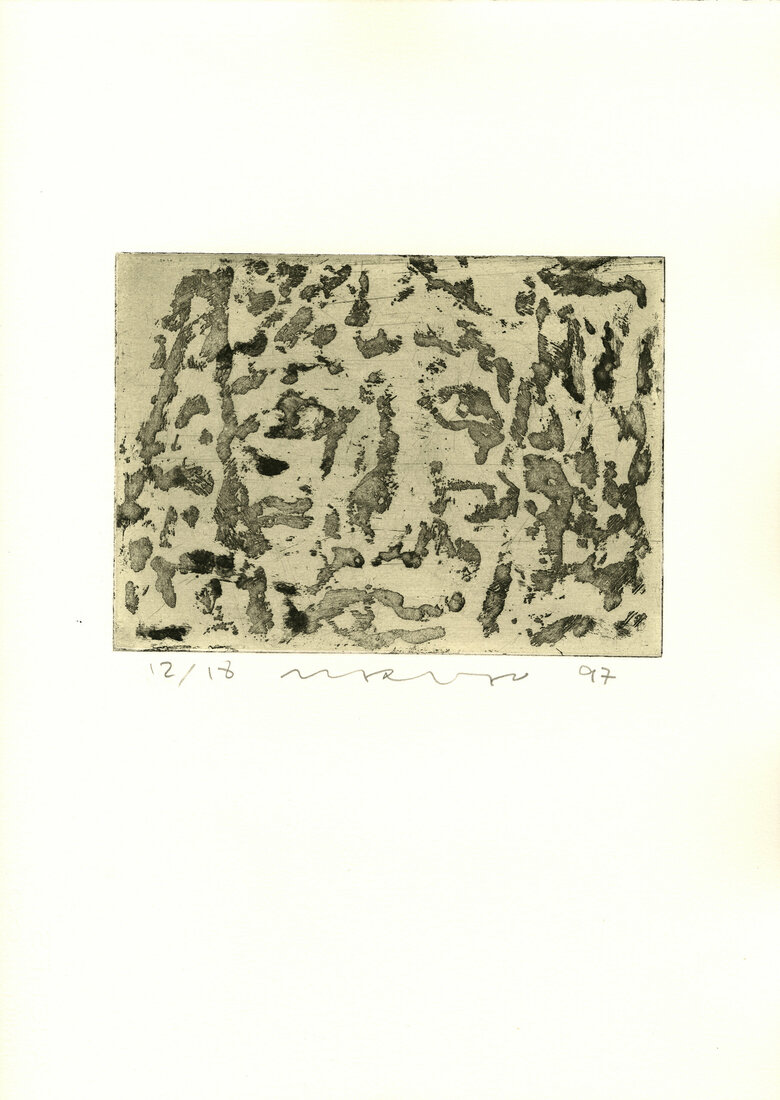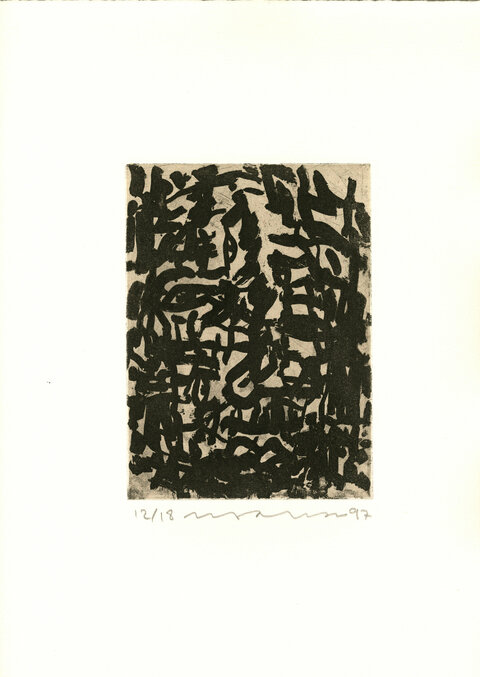Created over two years, this monumental collection of intaglio prints draws upon both Sufi and Islamic doctrines to elucidate the Marwan Kassab-Bachi's understanding of Being. Each print references the likeness of God's attributes, revealed through hazy landscapes, spaces, feelings, expressions, or states of being, manifesting the Unity of Being in daily life.
99 Heads (Ibn Arabi), 1997, draws similarities to the Quranic Chapters – Surat al-Baqara, which speaks of God’s omnipresence, and Surat al-Hashr, which lists God’s 99 names or attributes – as well as the 12th-century Arab Sufi doctrine of (وحدة الوجود) Wahdat al-Wujud, or the Unity of Being, by Muhyiddin Ibn Arabi. This monotheistic doctrine identifies reality (al-haqq) as God, asserting Him as Being, and thus, there is one reality that is wholly God.
The Arabic term Al-wujuh (الوجوه), meaning faces or heads, also suggests the notion of وجهة (wajh) implying destination, direction, trajectory, or viewpoint. The faces gradually emerge to the viewer through the intricate flows and configurations of lines and markings, offering multiple interpretations. The countenances are adorned with enduring imprints of experience. The overlapping and interconnecting lines and markings have autonomy, conspiring to create faces (landscape impressions) in a constant state of becoming or being.
In 99 Heads (Ibn Arabi), 1997, Kassab-Bachi experiments with the possibilities of intaglio printmaking, including techniques such as line etching, aquatint, sugarlift, and chincollé, all in black ink to emphasize the textures and nuances of the various etching methods. The thin lines seen in these prints are primarily the result of a standard etching process, where lines are scratched into acid-resistant ground on top of a metal plate. When bathed in acid, the lines are etched into the plate to hold ink for the printed image. Gradations of tone are achieved through aquatint, where particles of acid-resistant material are heated onto a printing plate before it is immersed in acid; the depths of tone are controlled by varying the acid bath time and varnishing areas meant to remain white.
The broad, expressive brushstrokes are created using the sugar lift, a process whereby a sugar solution is applied onto the surface of the plate, which dissolves in warm water, lifting the varnish to expose the metal to be etched. This allows Kassab-Bachi to create the impression of minute gestural brushstrokes, splatters, drips, and fingerprints, making the prints highly expressive. Each piece is printed using chine collé, where tissue-thin paper is placed between the printing plate and the primary paper. The two papers bond as they run through the press, creating a subtle backdrop to the printed image. Kassab-Bachi intentionally leaves the natural scratches on the metal plate, does not smooth them out, and often leaves fingerprints, giving the prints a raw and authentic feel. What looks like spontaneous design is the culmination of a multitude of chemical and physical work requiring great precision.
Signed and numbered '12/18 MARWAN' and dated '97', on the lower front, along the margin

